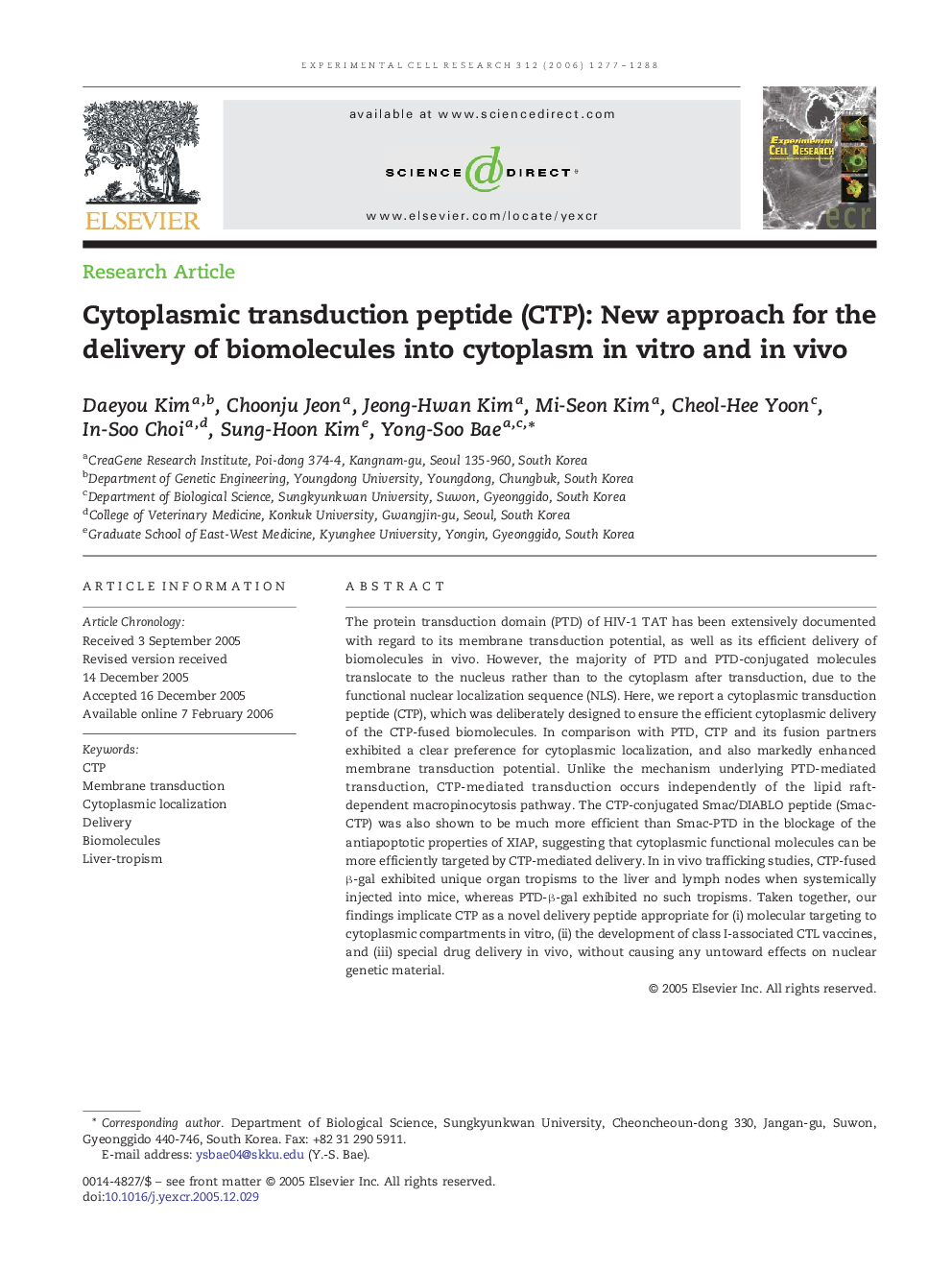| Article ID | Journal | Published Year | Pages | File Type |
|---|---|---|---|---|
| 2132238 | Experimental Cell Research | 2006 | 12 Pages |
The protein transduction domain (PTD) of HIV-1 TAT has been extensively documented with regard to its membrane transduction potential, as well as its efficient delivery of biomolecules in vivo. However, the majority of PTD and PTD-conjugated molecules translocate to the nucleus rather than to the cytoplasm after transduction, due to the functional nuclear localization sequence (NLS). Here, we report a cytoplasmic transduction peptide (CTP), which was deliberately designed to ensure the efficient cytoplasmic delivery of the CTP-fused biomolecules. In comparison with PTD, CTP and its fusion partners exhibited a clear preference for cytoplasmic localization, and also markedly enhanced membrane transduction potential. Unlike the mechanism underlying PTD-mediated transduction, CTP-mediated transduction occurs independently of the lipid raft-dependent macropinocytosis pathway. The CTP-conjugated Smac/DIABLO peptide (Smac-CTP) was also shown to be much more efficient than Smac-PTD in the blockage of the antiapoptotic properties of XIAP, suggesting that cytoplasmic functional molecules can be more efficiently targeted by CTP-mediated delivery. In in vivo trafficking studies, CTP-fused β-gal exhibited unique organ tropisms to the liver and lymph nodes when systemically injected into mice, whereas PTD-β-gal exhibited no such tropisms. Taken together, our findings implicate CTP as a novel delivery peptide appropriate for (i) molecular targeting to cytoplasmic compartments in vitro, (ii) the development of class I-associated CTL vaccines, and (iii) special drug delivery in vivo, without causing any untoward effects on nuclear genetic material.
